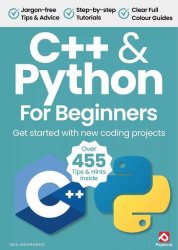- Добавил: literator
- Дата: 21-11-2024, 18:23
- Комментариев: 0
 Название: Android Studio Ladybug Essentials - Java Edition: Developing Android Apps Using Android Studio Ladybug and Java
Название: Android Studio Ladybug Essentials - Java Edition: Developing Android Apps Using Android Studio Ladybug and JavaАвтор: Neil Smyth
Издательство: Payload Media
Год: 2024
Страниц: 1289
Язык: английский
Формат: epub
Размер: 17.5 MB
This book, fully updated for Android Studio Ladybug and the new UI, teaches you how to develop Android-based applications using the Java programming language. Beginning with the basics, the book outlines how to set up an Android development and testing environment, followed by an overview of areas such as tool windows, the code editor, and the Layout Editor tool. An introduction to the architecture of Android is followed by an in-depth look at the design of Android applications and user interfaces using the Android Studio environment. Chapters also cover the Android Architecture Components, including view models, lifecycle management, Room database access, content providers, the Database Inspector, app navigation, live data, and data binding. More advanced topics such as intents are also covered, as are touchscreen handling, gesture recognition, and the recording and playback of audio. This book edition also covers printing, transitions, and foldable device support. Assuming you already have some Java programming experience, are ready to download Android Studio and the Android SDK, have access to a Windows, Mac, or Linux system, and have ideas for some apps to develop, you are ready to get started.





 Название: AutonoML: Towards an Integrated Framework for Autonomous Machine Learning
Название: AutonoML: Towards an Integrated Framework for Autonomous Machine Learning


